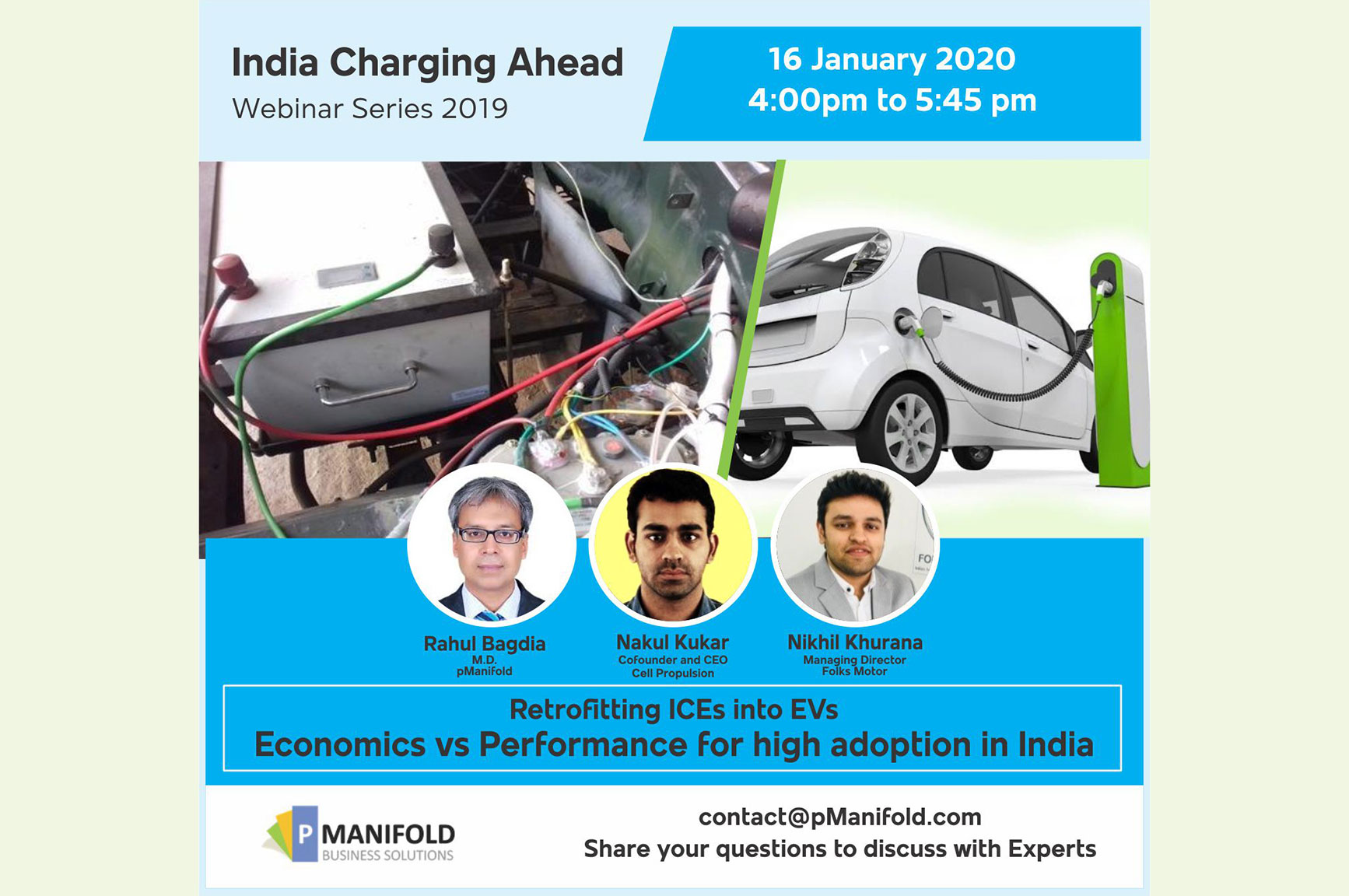
Retrofitting ICEs into EVs – Economics vs Performance for high adoption in India
Mobility is changing rapidly, and electric vehicles are proliferating globally. Government has formulated policy, infrastructure and business models for faster adoption of EVs. The uptake of privately owned EVs is encouraged while business models for charging stations vary, as they are deployed or operated by a range of players – public agencies, OEMs, energy companies etc. Converting existing petrol/diesel vehicles into pure electric vehicles reduces emissions up to 50%. It is impossible to ban ICE vehicle outright with EVs coming into picture.
This is where the importance of Retrofitting EVs comes in. Retrofitting ICE 2Ws, 3Ws and 4Ws into EVs has picked up well in India. EV Retrofit is supplementary to new EV production. Lower barrier to entry compared to new vehicle production due to clarity on technology landscape and certification requirements from ARAI. The engine and rest of the drive train components constituting power unit of conventional car can be replaced with simple motor-controller and battery unit. The retrofitted electric vehicle will have approx. 20 moving parts only as compare to conventional car having ~ 2000 moving parts. While the idea of speedy conversion for old car to run on electricity is appealing, there are numerous challenges involved like lack of indigenous technology, low availability of customized EV components, expensive pricing of EVs, lack of awareness among customers.
Retrofitting is important for the nation as it can help India take a leadership position in the automotive industry globally. Fuel price per capita is very high for India presently, it can be reduced with retrofitting/EVs coming into picture. It will help companies reduce carbon footprint. This webinar answers below questions regarding economics and performance of retrofitted vehicles for high adoption in India,
- How Indian customers find the proposition of retrofitted hybrid or pure EVs? What cost savings and efficiencies over new vehicles?
- What policy support to authorize retrofitted EVs for any incentives?
- What EV market retrofitting can capture?
- What technical and economic viability of electric vehicle retrofitting in India?
- What challenges in retrofitting 2W/3W/4W/ Buses?
- Is India prepared for this today or it will take another few years for this change? What should be the timelines for the change?
- Whose responsibility should be retrofitting? Customer / OEM / third party? Can we make retrofitting centers in India?
Speakers
| Mr. Nikhil Khurana | Mr. Nakul Kukar | Mr. Rahul Bagdia |
| Managing Director, Folks Motors | Founder & CEO, Cell Propulsion | Managing Director, pManifold Business Solutions |


